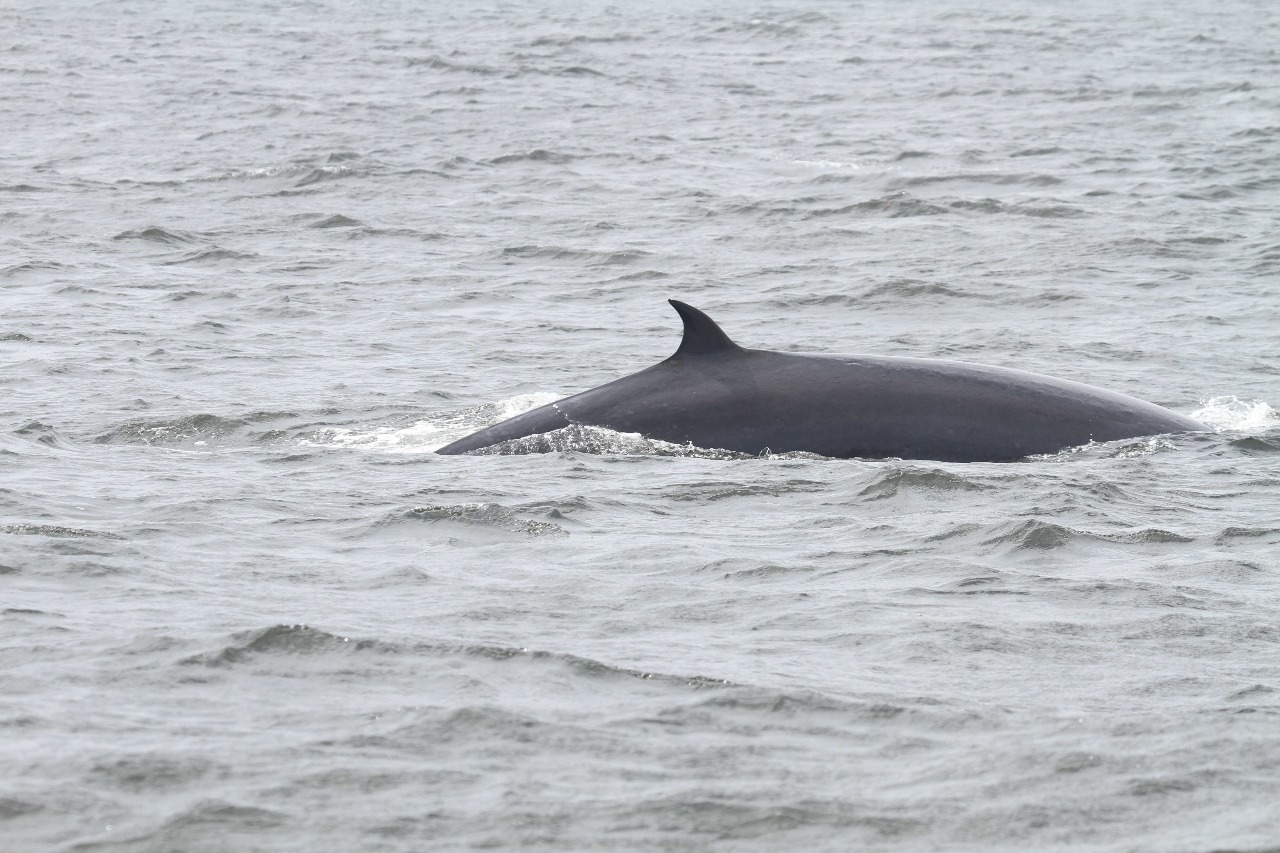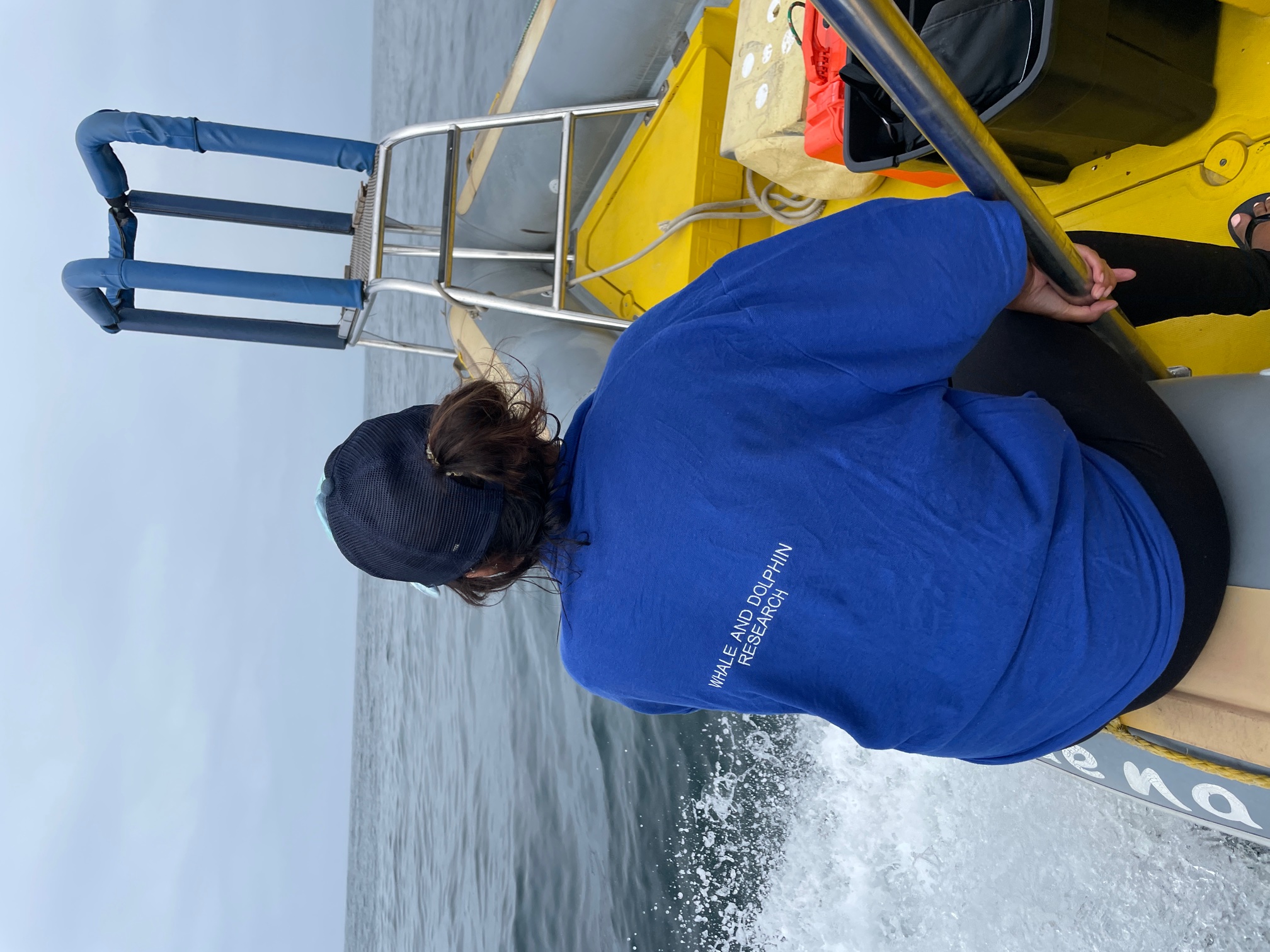MRI Whale Unit to conduct fieldwork in Walker Bay on Bryde’s whales
The Whale Unit of the University of Pretoria’s Mammal Research Institute has initiated their annual fieldwork to collect data on the Bryde’s whales. During the coming two months, we will conduct boat-based surveys in Walker Bay under permit protocols dictated by the South African government, to obtain photographs for subsequent individual identification (through the marks in the dorsal fins) as well as skin biopsy samples for subsequent genetic analysis. Another block of fieldwork will be conducted in Plettenberg Bay in the period May/June./

At an estimated 600 individuals, South Africa’s inshore Bryde’s whales form a small and unique population resident in the country’s coastal waters, which are nationally listed as “Vulnerable” according to the South African Red List Assessment. These non-migratory whales are not only South Africa’s largest marine consumer of economically important fish like Sardine and Anchovy but are also the only large whale species in South Africa estimated at such a small population size.
Two Main Research Projects
Two main research projects are being conducted on this population in order to enrich our understanding of their genetic population structure and diversity, as well as their foraging ecology.
1. Sampling of small skin pieces form apart of ongoing genetic research on this small population. Despite the general understanding of the coastal movements of Bryde’s whales in pursuit of their main prey (sardine and anchovy), there are still glaring gaps in our knowledge related to the structure of this population. Therefore, we aim to investigate if there are any geographically defined subpopulations along the coastline, or not. Knowledge on such possible population structure has strong implications in conservation management of the species in our country. Additionally, we aim to better understand the level of genetic variation within the population, as evidence of low levels of genetic variation may reduce the species’ ability to respond and adapt to environmental changes evident in South Africa’s waters. Additionally, Bryde’s whales will be photo-identified through the marks on their dorsal fins at various sites along the South African coast to find possible movement patterns of individual whales.
2. Despite the basic knowledge on primary prey and seasonal movements, the feeding and tropic ecology of South Africa’s inshore Bryde’s whales remains understudied. Nonetheless, due to their year-round residency on the Agulhas Bank and dependency on economically important pelagic fish (mainly sardine and anchovy) for its primate food source, they are extremely vulnerable to the effects of overfishing and environmental change. Therefore, we aim to investigate the past and present dietary contributions to evaluate possible changes in foraging strategies and assess the effects of pelagic fish exploitation on the trophic level at which these whales feed. This will be done through the analysis of stable isotope profiles in the baleen plates of stranded animals, as well as from skin biopsy samples.
For further inquiries please contact Dr Els Vermeulen (Research Manager at the Whale Unit) on 060 9714301 or Chris Wilkinson (Technical Manager at the Whale Unit) on 083 580 8247
Source
Mammal Research Institute Whale Unit
Department of Zoology and Entomology
University of Pretoria
Shop 11, Astoria Village, Main Road Hermanus 7200 South Africa
Call us and schedule your listing today! Contact Us
Copyright © 2025 Hermanus Online Magazine. Web Development by Jaydee media.

